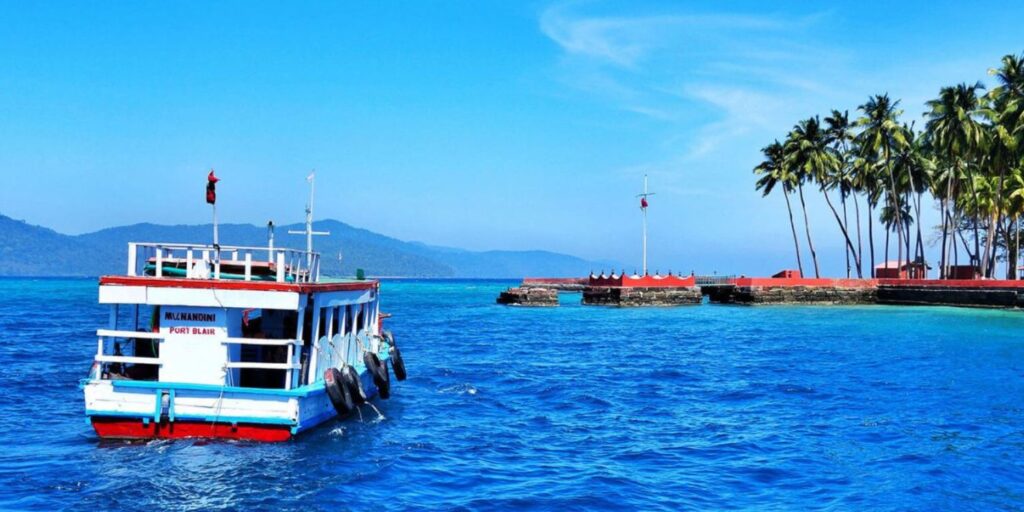Welcome to Ross Island, a captivating gem nestled within the pristine Andaman Islands of India.
Formerly known as Ross Island, this enchanting destination has been officially christened Netaji Subhash Chandra Bose Island since December 2018, paying homage to the legendary Indian freedom fighter.
However, situated just 3 kilometers east of central Port Blair, Ross Island beckons visitors with its rich historical tapestry and scenic allure. Once a bustling administrative center during the British colonial era, Ross Island today stands as a testament to bygone times.
Its historic ruins serve as a poignant reminder of its storied past. Moreover, visitors are transported back in time as they explore the remnants of colonial buildings, churches, and a picturesque cemetery, all shrouded in an air of mystery and nostalgia.
1. Early history

In the Andaman and Nicobar Islands annals, the early history unveils a saga of endeavor and tribulation. Following Archibald Blair’s meticulous survey in 1789, a fledgling settlement emerged at the site known today as Port Blair, then dubbed Port Cornwallis.
However, this pioneering hub underwent a relocation in 1792 to the Northern harbor, now recognized as Diglipur, retaining the name Port Cornwallis (with the former becoming Old Harbour). Unfortunately, by 1796, the settlement faced abandonment due to a distressing mortality rate.
Amidst this historical narrative, between 1789 and 1792, Blair erected vital institutions such as a hospital and a sanatorium on Netaji Subhas Chandra Bose Island. Further, Central to this narrative lies Ross Island, an enigmatic locale intertwined with the archipelago’s early chronicles, bearing witness to the ebb/flow of colonial aspirations and human resilience.
2. Penal Settlement Period
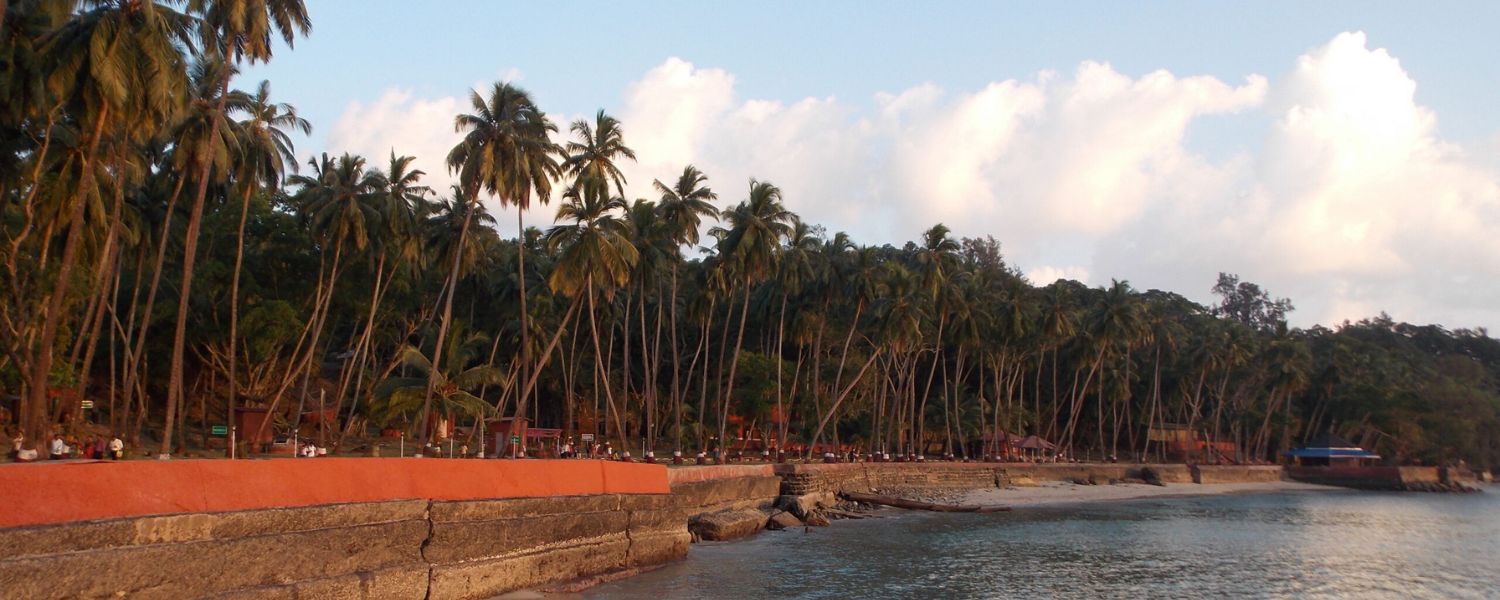
The evolution of the Andaman Islands, particularly Ross Island, from a colonial penal settlement to a significant administrative center marks a compelling chapter in history. Transitioning from Singapore to Port Blair (Viper Island) in 1858, the British established a Penal Settlement amidst the aftermath of the 1857 Revolt.
This relocation was strategic and countered opposition to the settlement’s establishment in mainland India. The arrival of Capt. (Dr.) James Pattison Walker, in March 1858, with a cohort of 773 convicts, including officials, signaled a new era in penal management. However, walker’s expertise proved invaluable in handling the hardened criminals, reflecting the gravity of the situation.
Over the years, Ross Island witnessed a shift in administrative dynamics. In 1872, the position of Superintendent was elevated to Chief Commissioner, with Sir Donald Martin Stewart assuming the inaugural role.
Stewart’s tenure set the stage for subsequent commissioners, including a significant figure like Netaji Subhas Chandra Bose. However, during Sir Charles Francis Waterfall’s term, Ross Island’s supremacy faced challenges.
Waterfall’s appointment as Chief Commissioner in 1938 marked a tumultuous period, exacerbated by the Japanese invasion during World War II. His capture by the Japanese and the execution of his deputy, Major Bird, at the clock tower in Aberdeen, Port Blair, epitomized the island’s vulnerability during wartime strife.
3. 1941 Earthquake

In 1941, Ross Island bore witness to a seismic event just months before the Japanese occupation swept through the archipelago. However, clarifying that this earthquake did not prompt the island’s abandonment is crucial.
Instead, the looming threat of Japanese rule during World War II spurred the British authorities to initiate the evacuation of the Andaman. Remarkably, Ross Island continued to serve as a significant hub, hosting dignitaries like Netaji Subhas Chandra Bose until 1947. Even amidst seismic tremors, landmarks like the formidable Cellular Jail stood resolute, their architectural integrity undisturbed across decades.
Tragically, it was not geological forces but administrative decisions that led to the partial demolition of the jail in 1960. Despite attempts by certain factions to manipulate historical narratives, the enduring legacy of the Ross Island population and its associated landmarks remains a testament to resilience and the struggle for independence.
4. Japanese Period
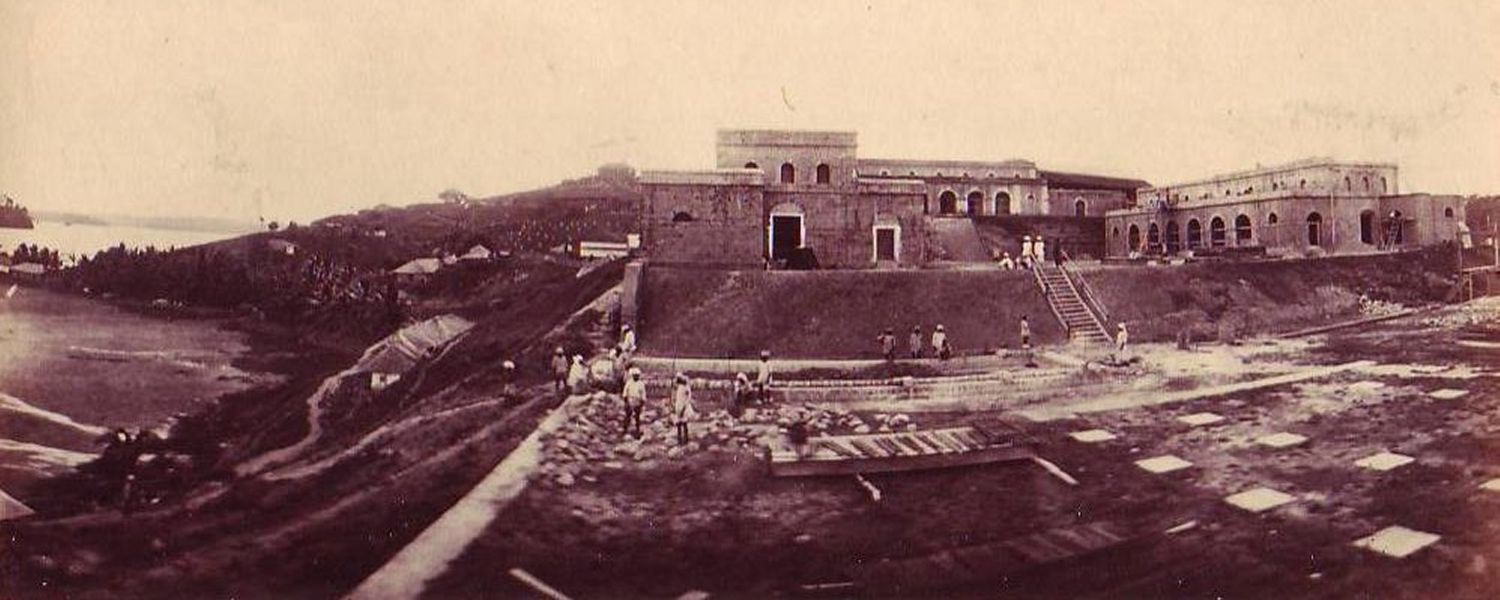
During the Japanese Period from 1942 to 1945, Ross Island underwent significant transformations under Japanese occupation. The Government House, originally the seat of the British administration, served as the residence for the Japanese admiral from March 1942 to October 1945.
Notably, in December 1943, Subhas Chandra Bose, collaborating with the Japanese in his anti-British efforts, made a historic visit to the island. Here, Bose ceremoniously hoisted the national tricolor atop the Government House, symbolizing resistance and sovereignty. The Japanese presence left enduring marks on Ross Island, Andaman, evident in the strategically positioned bunkers utilized as watch points to safeguard against potential invasions.
5. Indian naval post

In the waters of the Bay of Bengal, Ross Island, initially a British administrative hub, underwent a significant transformation in April 1979. At this juncture, it was entrusted to the capable hands of the Indian Navy, marking the establishment of a modest naval post known as INS Jarawa.
Named in homage to one of the indigenous tribes of the Andaman archipelago, this strategic outpost symbolized India’s maritime prowess. However, in a momentous announcement on 30 December 2018, Prime Minister Narendra Modi ushered in a new era by bestowing upon Ross Island is haunted by a revered identity, Netaji Subhas Chandra Bose Island.
This renaming honored the iconic freedom fighter and underscored the island’s historical significance in India’s struggle for independence. With this transformation, Ross Island, now Netaji Subhas Chandra Bose Island, is a testament to the nation’s rich heritage and unwavering spirit.
6. Lighthouse
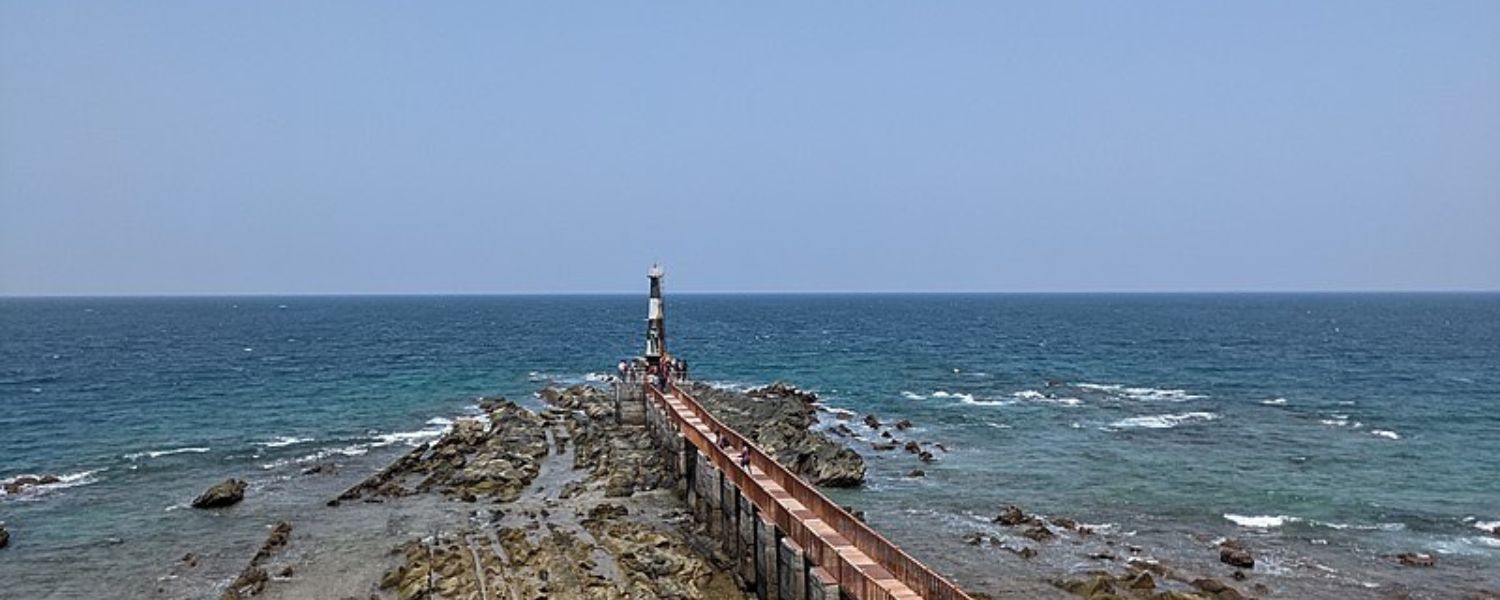
Ross Island, off the coast of India, has a picturesque pathway leading to its northern tip, where a remarkable structure stands tall against the vast expanse of the sea—the Lighthouse. Erected in 1977, this imposing 10-meter-high circular tower commands attention, perched on an offshoot rock just 50 meters from the shoreline.
Accessible during low tide, it is a beacon of safety for seafarers navigating the waters. Notably, this Lighthouse uniquely distinguishes India’s maritime Ross Island history.
Here, the pioneering use of photovoltaic panels was introduced, marking a significant leap in sustainable energy practices. These panels harness solar power to charge the batteries, ensuring uninterrupted operation of the guiding light.
7. Fauna
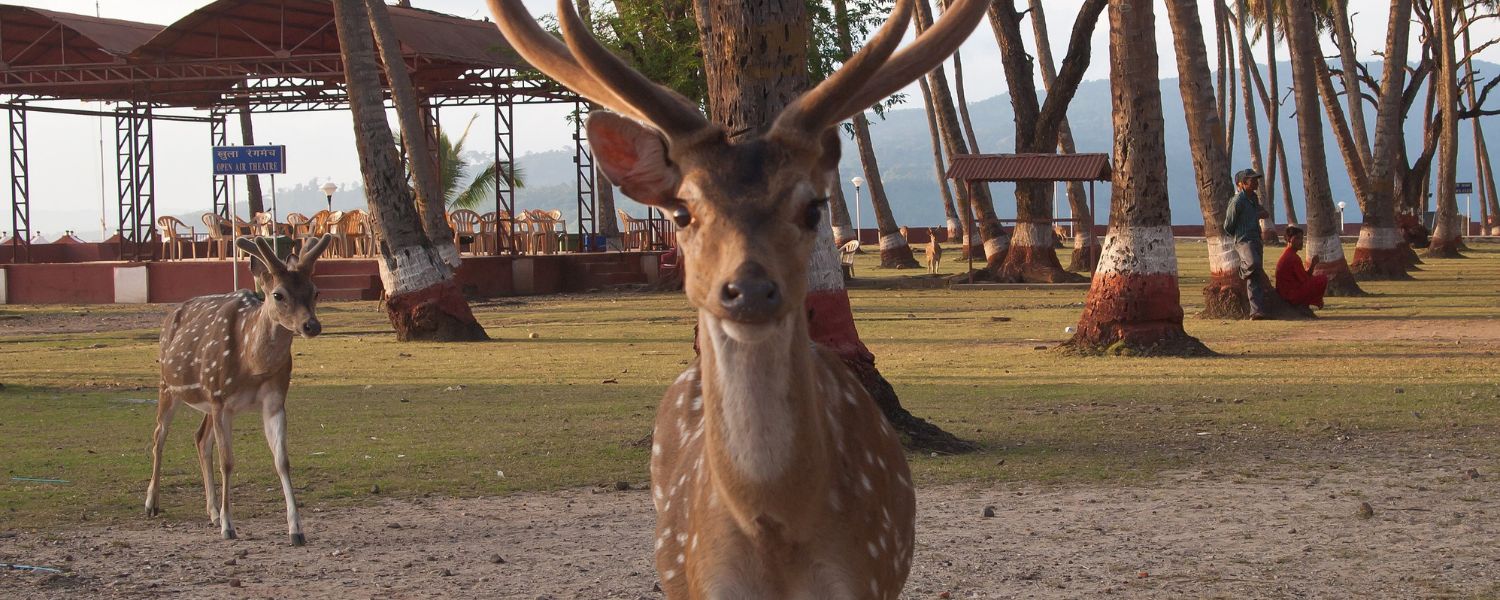
Transitioning from the bustling shores of Port Blair, visitors are enveloped in a serene oasis teeming with life. The verdant forests cloak the island, providing a haven for diverse fauna to thrive undisturbed.
Amidst this lush habitat, majestic Spotted Deer gracefully roam while vibrant peacocks flaunt their iridescent plumage. Towering palm and coconut trees sway gently in the breeze, completing the picturesque landscape.
8. How to Reach Ross Islands
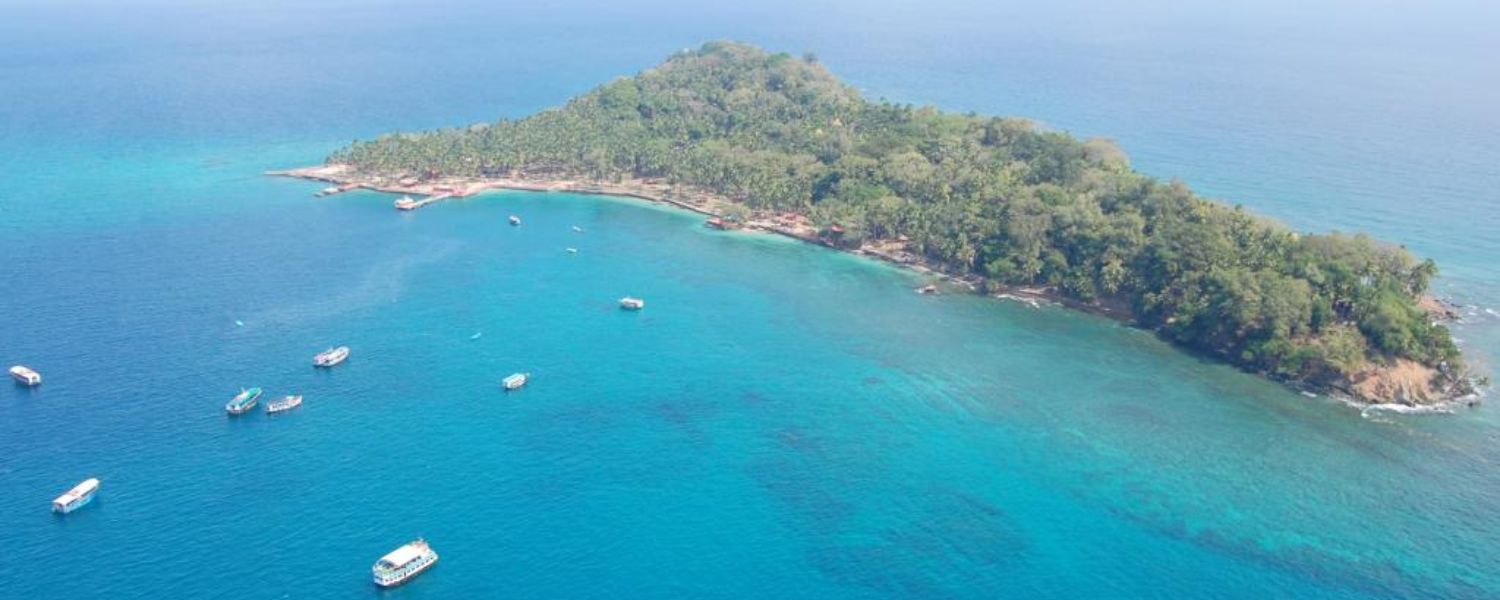
Firstly, the most recommended mode of transportation to reach Ross Island is by ferry. From the Rajiv Gandhi Water Sports Complex, a short 15-minute ride will transport you to the captivating shores of Ross Island. For those preferring a more guided experience, hiring a local guide is an excellent choice.
These knowledgeable companions can enrich your journey by showcasing the island’s highlights and history. Alternatively, if you prefer a hassle-free travel experience, consider booking a comprehensive Ross Island Andaman tour package.
9. Things to Do at Ross Islands

Near Port Blair, Ross Island, Netaji Subhash Chandra Bose Island is a captivating gem within the Andaman and Nicobar Islands. Serving as the “Headquarters of the British Colony,” this historic destination offers many activities to enrich your itinerary.
Transitioning into exploration, visitors can delve into Ross Island’s rich history by exploring its colonial ruins, including the British-era architecture and the eerie remnants of its past.
10. Best Time to Visit Ross Islands

Well, timing is critical to maximizing your experience! The optimal Period to explore the charm of Ross Island, synonymous with its lush greenery and historical significance, spans from October to March.
This window offers an ideal blend of favorable weather conditions and abundant opportunities for adventure enthusiasts. These months promise unforgettable moments, from indulging in thrilling water sports to unwinding on the picturesque beaches.
However, avoid visiting during the monsoon season (July to September) to avoid disruptions caused by intense tidal waves. For an enriching Ross Island escapade, align your journey with the pleasant months of October through March.
Conclusion
In conclusion, Ross Island, now renamed Netaji Subhash Chandra Bose Island, is a captivating fusion of Antarctic research and historical exploration.
From its early colonial roots to its pivotal role during World War II, Ross Island’s journey is a testament to resilience and transformation. Today, it beckons visitors with its well-preserved ruins, lush landscapes, and a poignant historical narrative.
Moreover, as the former administrative hub of the British and later under Japanese occupation, it offers a unique glimpse into the past. With its strategic Lighthouse, diverse fauna, and accessible ferry rides from Port Blair, Ross Island invites travelers to delve into its rich heritage and scenic beauty.
FAQ
Q. What is Ross Island famous for?
A. Ross Island, famously known as Netaji Subhash Chandra Bose Island, holds historical significance as the former capital of the British from 1858 to 1941. During World War II, the Japanese occupied it and transformed it into a Prisoner of War (POW) site.
Q. Is Ross Island worth visiting?
A. Ross Island offers a captivating glimpse into the colonial era with its well-preserved ruins, including a rebuilt Church and bakery, courtesy of the Indian Naval authorities. It stands as an ideal spot for sightseeing and historical exploration.
Q. What happened to Ross Island?
A. Ross Island was the administrative headquarters until 1945–46 when it was abandoned after reoccupation. Notably, Netaji Subhash Chandra Bose visited the island during his stay in Port Blair in 1943 under Japanese occupation.
Q. Can we stay on Ross Island?
A. No, civilian settlements are prohibited on Ross Island. Visitors must leave before nightfall, as the administration does not permit staying overnight. However, this adds to the island’s allure as a day-trip destination, ensuring its pristine charm remains untouched.
